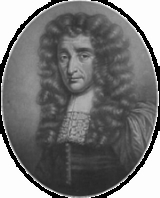Streona
There was a very full autopsy on Godfrey by two doctors (Skerrit & Cambridge) and it appears that the casue of death was a broken neck. John Dickson Carr says that this could not have been suicide since the marks on his neck indicate that his neck cloth was used but that to hang him would have required a six foot drop to break his neck "so that the head would as easily lie on one shoulder as the other". The pathoplogist Professor Keith Simpson also says that the marks were too low down to indicate suspension and indicate therefore that he was garotted with the neck cloth in the way indicated by the contemporary propaganda which could not have been suicide.
The theory that it was Herbert, 7th Earl of Pembroke rests on circumstantial evidence alone. After Herbert walked free on the murder charge Godfrey immediately took a two month holiday in France (Montpelier) from August to September 1678. A month after his return he was dead. Also the bruising to his body were indicative of the Earl's M.O. - he appears to have killed around six people in separate incidents whilst drunk. In the 17th century the top 4% by income were responsible for around 16% of homicides.
Prance's evidence was only forthcoming afteer he had been imprisoned in heavy chains in a freezing cold cell with a confession written out for him and a pen to sign it with. After three days he signed. It appears that there was a "consult" of Jesuits at the Duke of York's but no evidence this was in order to plan his brother's assassination. Ironically such a plot was hatched by Whigs at the Rye House Plot and also by Jacobites in 1696 against William III
The theory that it was Herbert, 7th Earl of Pembroke rests on circumstantial evidence alone. After Herbert walked free on the murder charge Godfrey immediately took a two month holiday in France (Montpelier) from August to September 1678. A month after his return he was dead. Also the bruising to his body were indicative of the Earl's M.O. - he appears to have killed around six people in separate incidents whilst drunk. In the 17th century the top 4% by income were responsible for around 16% of homicides.
Prance's evidence was only forthcoming afteer he had been imprisoned in heavy chains in a freezing cold cell with a confession written out for him and a pen to sign it with. After three days he signed. It appears that there was a "consult" of Jesuits at the Duke of York's but no evidence this was in order to plan his brother's assassination. Ironically such a plot was hatched by Whigs at the Rye House Plot and also by Jacobites in 1696 against William III


